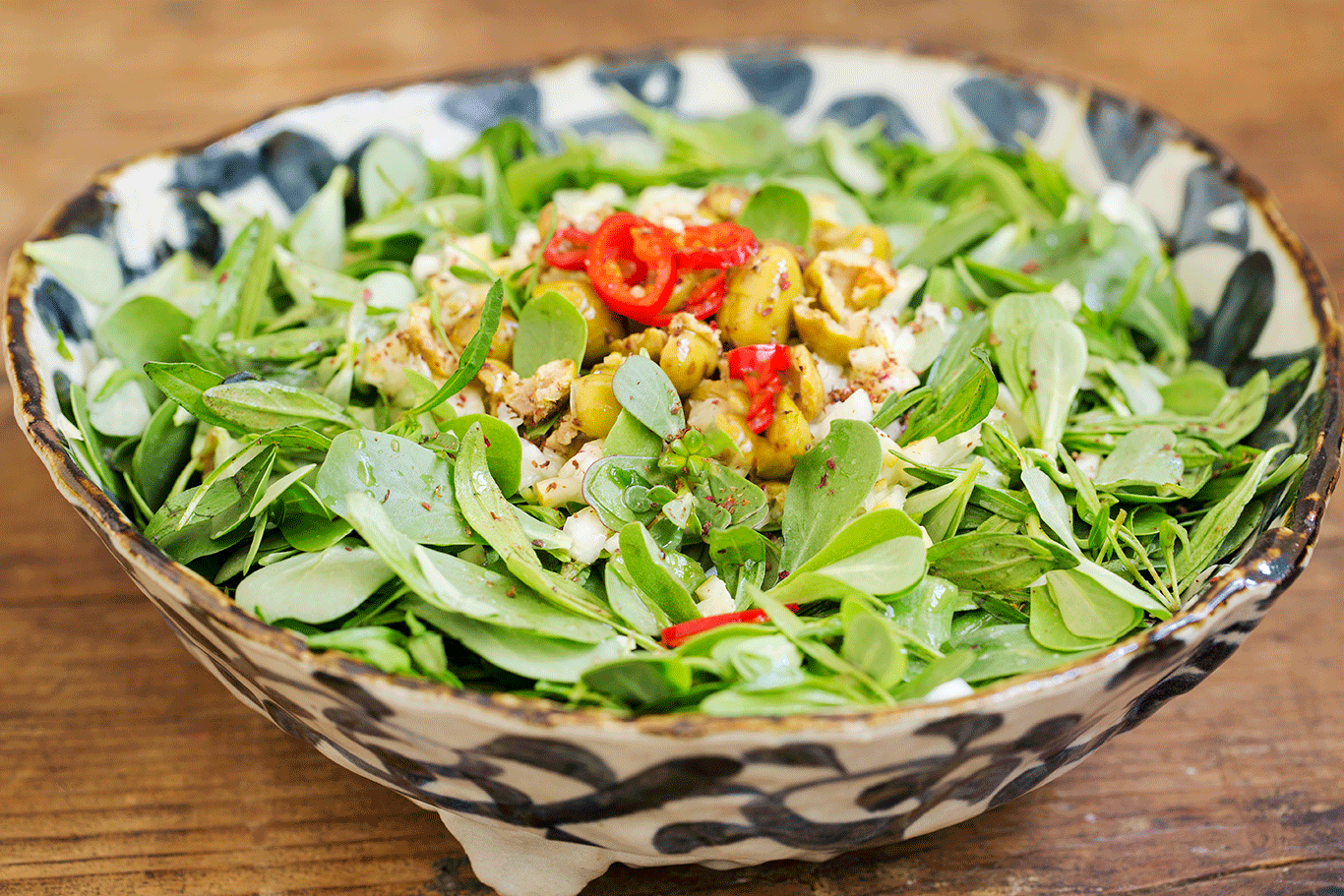Purslane and Thyme Summer Salad
Years ago I was invited to look at a small farm and orchard which belonged to a lady named Ekram who lived in the village of Sounnine in Tunisia. Ekram was a cook and a proud gardener. With the help of her family, she dug the soil, grew plants, cut and pruned, watered, gathered and aimed to cook mostly from her harvest.
Her garden was carefully ordered. Planted in rows, the fruit trees were surrounded by vines trained over the fence. In the ground were had patches of tomatoes, beans, carrots, leeks, artichokes, mint, parsley and more. The only sign of wilderness was a small pile of recently pulled weeds. I noticed that most were wilted purslane with their yellow little flower peering through. I was puzzled as to why she had discarded so much purslane, because I thought that in Tunisia as in Lebanon, people ate purslane. When I asked her, she too was surprised; no way did she believe this plant edible, other than fodder for her cows. We both laughed at each other’s incredulity, we looked for more purslane, and went into her kitchen to cook.
Portulaca oleracea otherwise known as summer purslane is an edible weed which, we in the Eastern Mediterranean, love. We add it raw to salads, we sauté it, or make it a filling for savory pastries. Purslane grows in many countries though not many consider it edible. There is also a cultivated variety which has larger leaves, but which bruise and brown easily because the plump and oval shaped leaves contain lots of water. Purslane is mild, slightly glutinous with a tinge of lemony acidity which works well with sharp and peppery herbs such as thyme or rocket. It is also a good source of Omega 3 fatty acids which is why in the past, people thought it could cure arthritis and heart disease.
If you would like to pick purslane, it is best to chose an area that has not been exposed much to pollution and pesticides. Pull up the plant from the soil completely and then cut off the roots. Purslane is delicate and will not last long once pulled. If adding it to salad, use the tender leaves and discard or compost the stems. It is possible to wrap the leaves in a kitchen towel, and keep them in the fridge for a day; wash them just before using them. I also suggest to assemble and dress the salad just before serving.
Ingredients
- 2 medium bunches of purslane
- 2 medium bunches of fresh thyme
- 50 g pitted green olives
- 2 spring onions
- 1 red chili pepper
- 1 lemon
- 1 teaspoon sumac
- 5 to 6 tablespoons olive oil
- Sea salt
- Method
- Pick the purslane and thyme leaves, discard the stems, and place the leaves in bowl of fresh water. Wash three times to get rid of every speck of soil, transfer to a colander, and leave to drip-dry until ready to prepare.
- Thinly slice half the lemon and finely chop each slice.
- Pit the olives and chop them coarsely.
- Finely chop the spring onions.
- Seed and slice the chili pepper.
- Press the remaining half lemon.
- In a serving bowl, add the purslane and thyme. Top with the chopped onion and lemon.
- Add the olives, and sprinkle with sumac.
- To make the dressing, add the lemon juice and twice as much olive oil in a jar. Add 1/2 teaspoon salt, place the lid bak on the jar, shake well, and pour the lemon dressing over the salad.
- Garnish with the chili and toss to serve.
Preparation time
Serves




Leave a Reply
Want to join the discussion?Feel free to contribute!